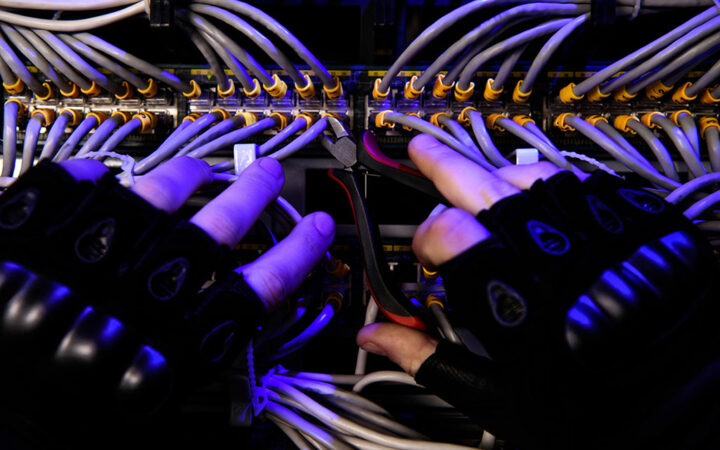
Darya is a crypto enthusiast who strongly believes in the future of blockchain. Being a hospitality professional, she is interested in finding the ways blockchain can change different industries and bring our life to a different level.
A new scheme for solving Bitcoin scalability issue has been designed by Conner Fromknecht and Olaoluwa Osuntokun. Atomic Multi-Path Payments over Lightning promises to enhance privacy and decentralization to facilitate Bitcoin payments.

Although Bitcoin was the most favored and popular cryptocurrency of 2017, it had quite a prominent weak point – network scalability. With growing number of investors joining the network, the Bitcoin’s blockchain network became more and more congested, which resulted in considerable increase in the transaction costs and extreme decrease in transaction speeds.
A lot of upgrades are ahead in the pipeline for this year, so investors, as well as Bitcoin enthusiasts are waiting for developers to arrive with a long-term scalability solution which will allow Bitcoin blockchain accommodate large pools of investors. With this goal in mind, new schemes and technologies for expanding Bitcoin’s functionality as a rapid, secure, and cheap payment instrument are being developed.
One of the recent innovations enhancing privacy and decentralization to facilitate payments is Atomic Multi-Path Payments over Lightning, a new scheme proposed by Conner Fromknecht and Olaoluwa Osuntokun.
While explaining the new solution in their message, Fromknecht and Osuntokun give an answer to the following frequently-asked question:
“I have five $2 channels, is it possible for me to atomically send $6 to fulfill a payment?”
In fact, this is why AMP(Atomic Multi-path Payments) scheme was introduced. It supposes not re-using any payment hashes across all payment flows, and adding a strong guarantee that the receiver won’t be paid until all partial payment flows are extended.
So the answer is positive, and is as follows:
“The answer to this question is ‘yes’, provided that the receiver waits to pull all HTLC’s until the sum matches their invoice. Typically, one assumes that the receiver will supply a payment hash, and the sender will re-use the payment hash for all streams. This has the downside of payment hash re-use across multiple payments (which can already easily be correlated), and also has a failure mode where if the sender fails to actually satisfy all the payment flows, then the receiver can still just pull the monies (and possibly not disperse a service, or w/e).”
The scheme requires no fundamental changes to the protocol as is now, as the negotiation is strictly end-to-end between sender and receiver. According to Fromknecht and Osuntokun, AMP “can be experimented with on the Lightning Network.” As claimed, the protocol goals are atomicity, avoidance of payment hash reuse, order invariance and non-interactive setup.
Apart from AMP, which promises to help solve Bitcoin’s scalability issue, other schemes addressing the problem include Lightning Network, SegWit, and Schnorr signatures.
The Lightning Network is a blockchain-based decentralized network of “payment channels”. Users, who successfully installed the Lightning software and established connection with the network, have the option of opening up payment channels with other users. The Lightning Network allows to make micropayments between two parties without a need to broadcast directly to the blockchain, which contributes to reducing transaction fees, increasing the speed of the whole payment process while enhancing privacy. Also, it is complemented with Atomic Swaps, or atomic cross-chain trading, which pose the exchange of one cryptocurrency to another avoiding any third-party.
Lightning Network, a breakthrough payment solution, is supported by Blockstream that launched its merchandise store for immediate support of Lightning payment. The solution is also likely to be adopted by Coingaming Group, a famous Bitcoin gaming operator.
Segregated Witness, or SegWit, is the name used for an implemented soft fork change in the transaction format of the Bitcoin currency ( for example Bitcoin Atom (BCA)), which has also been implemented on currencies such as Litecoin, DigiByte and Vertcoin.
Segwit reduces Bitcoin transaction speed by splitting the transaction into two segments, removing the unlocking signature (“witness” data) from the original portion and appending it as a separate structure at the end. The original section continues to hold the sender and receiver data, and the new “witness” structure contains scripts and signatures. The original data segment is counted normally, but the “witness” segment is counted as a quarter of its real size.
Apart from other things, SegWit is expected to help improve Lightning Network’s transaction malleability.
According to AMP’s adherents, sending payments over the AMP protocol would provide several benefits, such as support of larger payment flows, improvement of Lighting Network intermediaries’ privacy and fee savings.
However, attitudes toward the new scheme are mixed. While some see it as “excellent innovation”, others state that it’s quite “hard to interpret how this will work in the real world and what the implications are”.
“We’ve presented a design outline of how to integrate atomic multi-path payments (AMP) into Lightning. The existence of such a construct allows a sender to atomically split a payment flow amongst several individual payment flows. As a result, larger channels aren’t as important as it’s possible to utilize one total outbound payment bandwidth to send several channels. Additionally, in order to support the increased load, internal routing nodes are incensed have more active channels,” – AMP’s developers explained, adding:
“The existence of AMP-like payments may also increase the longevity of channels as there’ll be smaller, more numerous payment flows, making it unlikely that a single payment comes across unbalances a channel entirely. We’ve also showed how one can utilize the current onion packet format to deliver additional data from a sender to receiver, that’s still e2e authenticated.”
All in all, Bitcoin enthusiasts and crypto investors seem to believe in AMP’s potential expecting it to receive support from stakeholders.

Darya is a crypto enthusiast who strongly believes in the future of blockchain. Being a hospitality professional, she is interested in finding the ways blockchain can change different industries and bring our life to a different level.




